“Dedication, absolute dedication, is what keeps one ahead.”—Bruce Lee
Simple & Sinister embodies the quote above. Dedication to achieving Simple and continuing to Sinister has led students on multiple-month and multiple-year journeys. A rarity in today’s scrolling-based attention-span world, the dedicated pursuit of the S&S goal is a worthy endeavor.
However, dedication can and will meet frustration.
Progress on any program is rarely linear once you get beyond the blissful beginner’s gains, so you should be ready for the stalls when progress stops, and you feel stuck.
This is when your dedication will be tested.
Here are three strategies to break the stall and continue your progress.
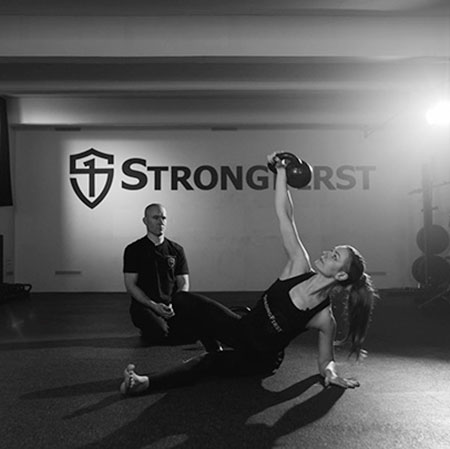
Strategy #1: Be Sure You Need a Different Strategy
Gray Cook provided a great clarifier to the SAID principle. Specific adaptation to imposed demands is a well-known training principle, but it is the individual’s specific adaptation to the environment’s imposed demands. So, is your problem with the individual or the environment?
Let’s say you are taking a supplement to help you get better sleep—an individual strategy. But what you need is a new mattress—an environmental strategy. You could take all the supplements you want, but tweaking the individual strategy will not change the environment. Being clear on when you need an individual adjustment or adjusting the environment is critical.
What does this mean for training? Filter your lifestyle, such as sleep, hydration, nutrition, stress, and programming, through the individual or environmental filter. Determine if you need to adjust your individual strategy with an intervention or if you need to change the environment.
Changing programs will not help if your work and relationship stress is draining your recovery. A new protein powder might not compensate for the lack of sleep from working two jobs. Ensure you target the correct lifestyle factor, and the individual or environmental strategy as needed.
Strategy #2: Get Stronger
If that shocks you, you might want to remember we are StrongFirst.
If the heaviest weight you lift is the heaviest weight you lift, then it will always feel heavy. Therefore, you need to be doing something beyond that “heaviest” weight.
Options to get stronger:
- Barbell work
- Double kettlebell work
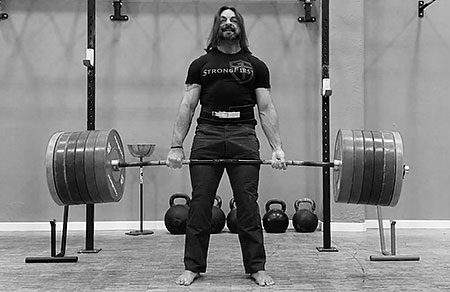
Low-rep barbell deadlifting and military press might be the key to breaking through a stall in your swings and/or get-ups. Nothing helps a 32kg swing feel more manageable than a 100kg (and beyond) deadlift. Military pressing 60kg will make a 24kg get-up easier. Raising your strength base will allow you to produce more power in the swing and confidence in the get-up.
How do you implement it? Either substitute two days a week of a solid 3/3 or 5/3 routine for the deadlift and military press. Or use a Power to the People! style routine before your S&S practice. Which is right for you will depend on your available time and recovery ability.
Double kettlebell work is a sneaky way to push your strength base. A double 16kg program—a 32kg load—when you are stalled at 24kg can bump you past your sticking point. Double 32kg—a 64kg load—can make the 48kg more manageable.
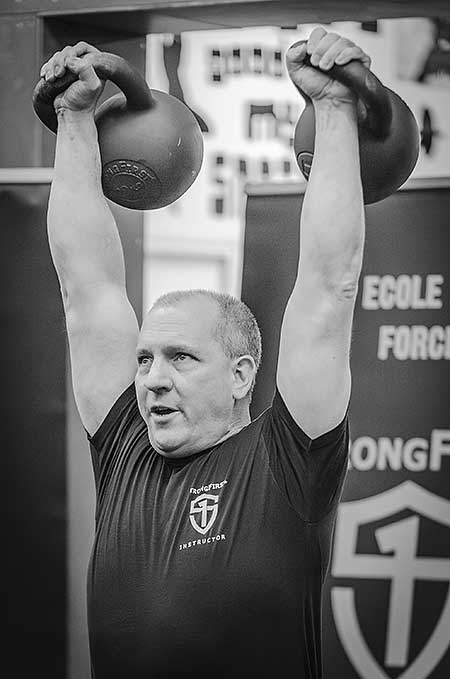
You get the idea. Plus, the symmetrical load of double kettlebell work can help balance the asymmetrical load of S&S.
How do you implement it? Enter double kettlebell Strength Aerobics (SA) or Iron Cardio (IC). Swap two of your S&S days for a double kettlebell SA or IC session, or the Moving Target Complex, etc. (There are many options.)
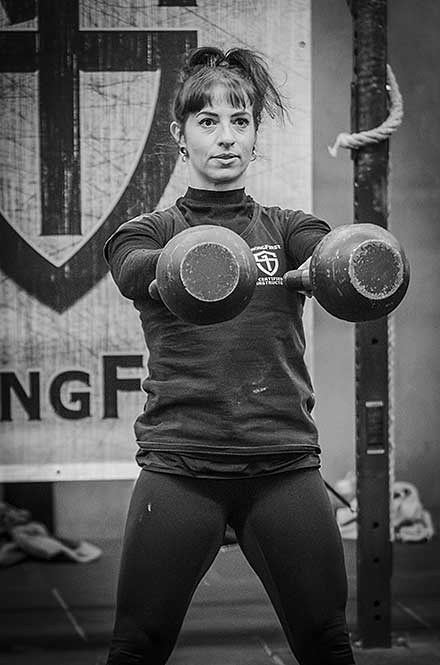
Strategy #3: Alternating Weights
The “dose makes the poison” is a good cliché. Sometimes, it’s the dose that makes the problem, and when moving between kettlebell sizes, that’s where the “poison” lies. You might be able to handle the next kettlebell up for three reps but not five, or you can do a partial get-up at a heavier load but not a full one. So, instead of writing off the heavier load…alternate it.
Do a set of five at 32kg on each arm (Timeless), followed by a set of three on each arm at 40kg, and so on for the desired volume of the day. If you are at sets of ten with 32kg and five with 40kg, follow the same strategy. The concept remains the same at any weight ratio.
For get-ups, you might have a complete rep on each side with one weight followed by a set at the heavier weight going to the elbow (or hand). You get the idea. The overload of the heavier weight will make the lighter weight feel lighter.
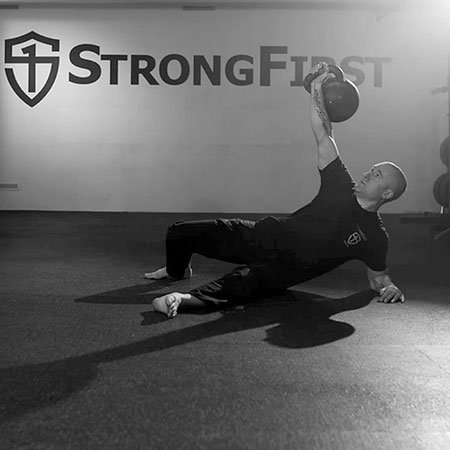
A note on “tweener” kettlebells—the in-between kettlebell weights are a relatively new addition to the kettlebell world. Generally, we prefer the larger 8kg jumps of the traditional set. Being forced to stay at a weight for longer, building volume and skill has great benefits. However, there will be a point where a particular “tweener” weight fills a necessary gap.
For me, that is the 36kg kettlebell. It allows me to train a volume and intensity that fits perfectly between my 32kg and 40kg. And it is the only “tweener” kettlebell I use. If you continue to stall at a certain transition, you may find that a “tweener” kettlebell will close that gap and allow you to progress beyond it. But never a 2kg “tweener” and not for every gap between the traditional sizes.
Dedicated, dogged pursuit of a goal and not giving up at every stall is a quality to cultivate. It must be tempered by the ability to identify a sticking point and choose a progression around it to continue progress towards the ultimate goal. I hope these strategies assist you on your S&S journey.
“Kettlebell Simple & Sinister”—available as a book (paperback, Kindle, audio) and on video
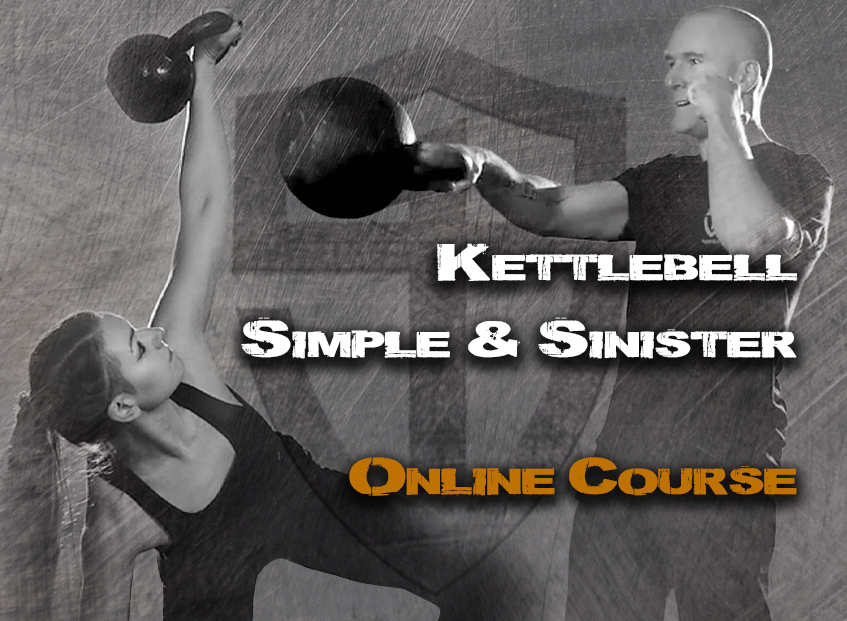
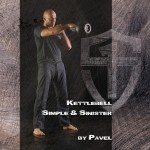
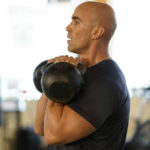
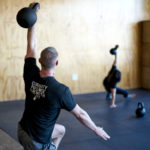
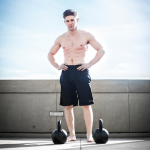




Hey Brett
You caught my interest when you said perform a PTTP program before S&S Practice… is that doing both programs 5 times a week?
Rob,
I would likely go with 2 days a week (maybe 3) for the additional PTTP work.
And PTTP is before S&S on the same day?
Great article Brett, thank you!
Thank you Lars.
Great article, sir, very useful tips for all S&S fans, thank you!
Thank you Pavel.
Wonderful article. Thanks!
Thank you John.
Thank you, Brett, for thinking outside the box – that “box” can be whatever program one is currently following.
Your “Strategy #2: Get Stronger” has been part of my training since I began it in earnest 20+ years ago. Having been introduced to Pavel first by his book, “Power To The People!” that features the barbell deadlift and only later discovering kettlebells, I found that every time my deadlift grip was my weak point, kettlebell swings got me over the plateau. Unsurprisingly, the reverse was also true – if I was having trouble holding onto my swings, more barbell work made the difference.
Thank you Steve—stronger is better. The carryover and transfer between KBs and other activities is strong—I entered into grip training at a fairly high level and progressed in nail bending etc. due to my base of grip strength from KB work.
Indeed, Mr. Jones. Anyone wishing proof of your grip strength need look no further than here: https://ironmind.com/certification/red-nail-gold-nail-/red-nail-roster/ – see the year 2004.
Great info. I’m in my mid to late 60s and wish that I knew about kettlebells in my 20s or 30s, but what kept me making progress was those “tweener” bells in between the standard sizes. When I ordered the 32kg bell after using the 24kg for some time, I was shocked at the difference and could not press it at all with my left arm. I swallowed my ego and ordered the 28kg and progressed well, ultimately getting that 32kg up.
Those “tweeners” were essential for me.
Albert—being able to “fill that gap” between sizes at the right interval can be key. Well done on your progress.